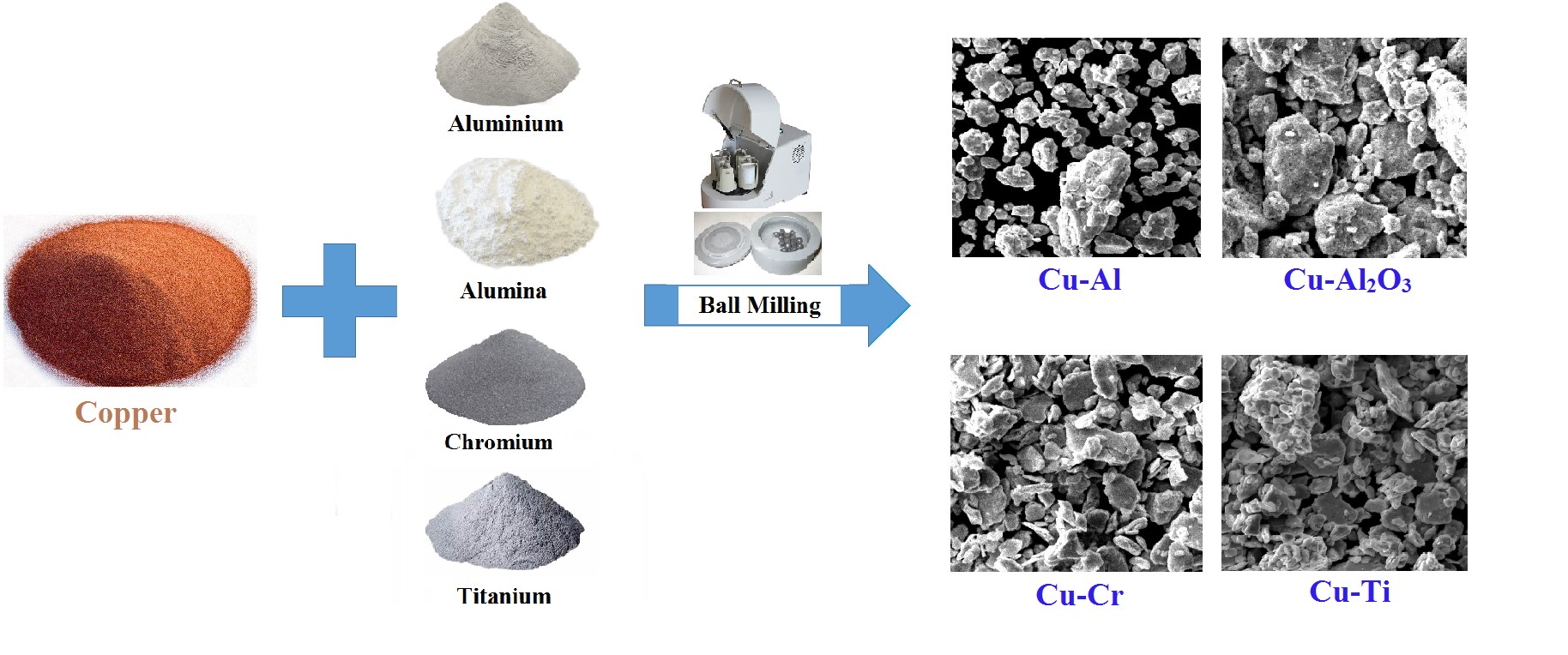Sun, Jan 26, 2025
[Archive]
Volume 18, Issue 1 (March 2021)
IJMSE 2021, 18(1): 1-11 |
Back to browse issues page
Download citation:
BibTeX | RIS | EndNote | Medlars | ProCite | Reference Manager | RefWorks
Send citation to:



BibTeX | RIS | EndNote | Medlars | ProCite | Reference Manager | RefWorks
Send citation to:
Mirahmadi Babaheydari R, Mirabootalebi S O, Akbari Fakhrabadi G H. Effect of Alloying Elements on Hardness and Electrical Conductivity of CU Nanocomposites Prepared by Mechanical Alloying. IJMSE 2021; 18 (1) :1-11
URL: http://ijmse.iust.ac.ir/article-1-1970-en.html
URL: http://ijmse.iust.ac.ir/article-1-1970-en.html
Abstract: (12652 Views)
Cu-based alloys have a wide range of applications in the electronics industry, communications industry, welding industries, etc. Regarding the type and percentage of the second phase, changing in the alloying elements has a significant effect on the mechanical and electrical properties of copper composites. The aim of the present work is to synthesize, investigate, and compare the micro-structure, micro-hardness, and electrical properties of different Cu-based nanocomposites. For this purpose, Cu-Al, Cu-Al2O3, Cu-Cr, and Cu-Ti were fabricated via ball milling of copper with 1, 3, and 6 weight percentages. The vial speed was 350 rpm and the ball-to-powder weight ratio was kept at 15:1. The milling process was performed at different times in Argon. Next, the prepared composites were studied by scanning electron microscopy (SEM), X-ray diffraction (XRD), and dynamic light scattering (DLS). Based on XRD patterns, crystallite size, lattice strain, and lattice constant were calculated by Rietveld refinement using Maud software. The results show a decrease of crystallite size, and an increase of the internal strain and lattice constant by rising the alloying elements in all composites. Then, the produced powders compressed via the cold press and annealed at 650˚C. Finally; the micro-hardness and the electrical resistance of the manufactured tablets were measured. The results of these analyses show that micro-hardness is increased by enhancement of the reinforcement material, due to the rising of the work hardening. Cu-6wt%Ti with 312 Vickers and Cu-1wt%Al2O3 with 78 Vickers had the highest and lowest micro-hardness, respectively. Moreover, the results of the electrical resistance indicate a dramatic rise in the electrical resistance by increasing the amount of alloying material, which Cu-1wt%Al with 0.26 Ω had the highest electrical conductivity.
Type of Study: Research Paper |
Send email to the article author
| Rights and permissions | |
 |
This work is licensed under a Creative Commons Attribution-NonCommercial 4.0 International License. |







